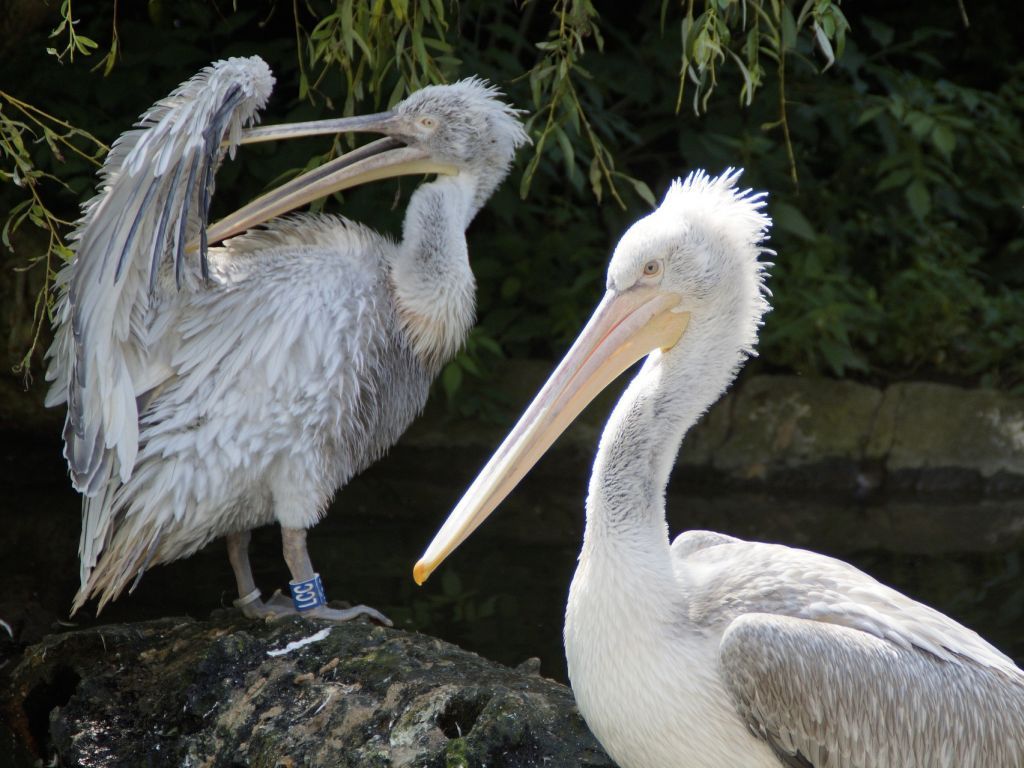Pelicans return to the Danube after 100 years

Ornithologist Milan Ruzic explains that pelicans sometimes come to search for food. In the past, pelicans used to populate the great swamps along the Danube, the Tisa and the Sava, but those areas dried out over time, turning into forests or farming land and causing these birds to lose their habitat in Serbia back in the 1940s and move mostly to the south of Europe, with a smaller number populating the Skadar Lake area in Montenegro, Albania and Greece.
ŌĆō Still, at times, outside the nesting period, pelicans head upstream along the Danube to places where they can find food, and it can be located primarily around the HPP Djerdap II, a natural dam where fish gather in large numbers. So, there have been several isolated cases before ŌĆō Ruzic says and reminds that the pelican is still one of the most endangered animals in the world.
The return of pelicans is an unusual phenomenon, which ornithologist Dr Sasa Marinkovic of the Sinisa Stankovic Institute calls ŌĆ£an accidental occurrence in the birds' migrationŌĆØ in his statement for RTS.
ŌĆō This doesn't mean that they will stay in our area, but it does indicate that the program of the protection of pelicans, carried out in Bulgaria and Greece, has been successful. The small pelican used to nest in Pancevacki Rit, but this local species is extinct, and if pelicans do return, it is the small pink pelican that will be the first to return ŌĆō Marinkovic explained.
He has also warned that the situation is quite bad and the there are numerous problems ŌĆō the great bustard, an imposing bird, no longer nests in Serbia and the eastern imperial eagle is facing extinction.
ŌĆō The latest occurrence makes us optimistic that something can be changed and that it should be changed now, and not when these species are already extinct ŌĆō Marinkovic explains and adds that the Dalmatian pelican is on the red list of endangered animals.
In order for these species to be saved, the habitats need to be preserved. When it comes to the Dalmatian pelican, the habitat is Carska Bara.
ŌĆō Water habitats are the most endangered due to water pollution. We need to preserve them and include them in one of the future programs in order for them to be repopulated ŌĆō Marinkovic said and mentioned the increasingly frequent procedure of having species breed in captivity and then returning individual birds to a natural environment.
Flocks of Dalmatian pelicans, while they're still here in these areas, can be seen in Golubac, Veliko Gradiste and Mala Vrbica in Kladovo.
Most Important News
06.04.2024. | Agriculture
Preconditions for Placement of Fresh Blueberries and Dried Plums in Chinese Market Secured

16.04.2024. | News
Jovan Ciric, Leasing Director Retail MPC Properties ŌĆō MPC Echo symbolizes our desire for good ideas and innovative endeavors to spread freely and bring about positive changes

16.04.2024. | News
10.04.2024. | Finance, IT, Telecommunications, Tourism, Sports, Culture
Creative Industry ŌĆō What This Serbian Economy Sector Worth EUR 2 Billion Encompasses

10.04.2024. | Finance, IT, Telecommunications, Tourism, Sports, Culture
23.04.2024. | Construction, Tourism, Sports, Culture
Laying down of foundation stone for construction of national football stadium in Surcin announced for May 1

23.04.2024. | Construction, Tourism, Sports, Culture
16.04.2024. | News
Economy Fair in Mostar opens ŌĆō 26 companies from Serbia exhibiting

16.04.2024. | News
23.04.2024. | Finance
Mali: UK Export Finance interested in financing several projects in Serbia

23.04.2024. | Finance


 Izdanje Srbija
Izdanje Srbija Serbische Ausgabe
Serbische Ausgabe Izdanje BiH
Izdanje BiH Izdanje Crna Gora
Izdanje Crna Gora


 News
News







